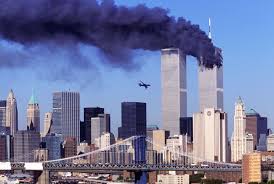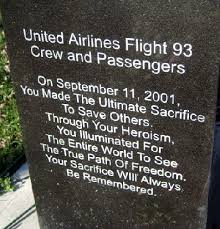Of the 4,385 air rage incidents reported by September 24, only one person has been criminally charged.
That is Vyvianna Quinonez, who in May punched a flight attendant in the face on a Southwest flight approaching San Diego. At the time of her arrest, she claimed she was acting in self-defense.
The airlines are under Federal jurisdiction—which means legal violations can be prosecuted by the Department of Justice (DOJ). Criminal penalties can run up to 20 years in prison if convicted of interfering with the operations of an aircraft.
As a civil authority, the FAA cannot charge anyone. The agency can fine violators up to $35,000.

Seal of the Justice Department
There are several reasons for this huge increase in air-rage incidents.
First, coach passengers are cramped into tight places with strangers, where they have little control over what’s happening to them. This can lead to nervousness, negative feelings and anger.
Second, the political polarization that marked the Donald Trump administration has taken to the skies with the imposition of mask mandates.

Surgical mask
Robert Bor, a director at the UK-based Centre for Aviation Psychology, says that most air-rage incidents are about masks.
“Most people are pretty neutral on whether they have Coke or Pepsi, but they will have very strong feelings when it comes to issues relating to health, human rights, access to air and so on; it triggers people to behave in slightly more militant ways.”
By June 29, of the 3,100 air-rage incidents thus far reported, 2,350 involved people refusing to comply with the Federal mask mandate.
Airline crew members are frightened by these attacks—and depressed at the lack of punishment for them.
“We tell them [passengers] that it is a Federal offense to not comply with crew member instructions,” said Sara Nelson, international president of the Association of Flight Attendants. “Then the plane is met by airline supervisors or airport law enforcement and the passenger gets a slap on the wrist and sent on their way.”
FAA Administrator Steve Dickson has his own complaints: “Every week, we see situations in which law enforcement was asked to meet an aircraft at the gate following an unruly passenger incident. Many of these passengers were interviewed by local police and released without criminal charges of any kind.”
Meanwhile, the Transportation Safety Administration (TSA) has had its own serious lapses in judgment.
In March, 2013, TSA Administrator John Pistole unveiled a proposal to allow passengers to bring small knives, baseball bats, golf clubs and other sports equipment onto planes.
He explained that in light of hardened cockpit doors, armed off-duty pilots traveling on planes and other preventive measures, small folding knives could not be used by terrorists to take over a plane.
TSA dropped the proposal in June, thanks to fierce opposition from passengers, Congressional leaders and airline industry officials.
By October, 2021, the TSA had seized nearly 4,500 guns at airport security checkpoints, compared with about 4,400 in all of 2019, before the pandemic caused air travel to plummet in 2020.
About 85% of the weapons caught were loaded. They were found on passengers or in carry-on bags across 248 U.S. airports, largely in Atlanta and Dallas-Fort Worth.
It’s worth remembering that for all the publicity given the TSA’s “Air Marshal” program, it’s been airline passengers—not Federal lawmen—who have repeatedly been the ones to subdue unruly fliers.
Prior to 9/11, commercial airline pilots and passengers were warned: If someone tries to highjack the plane, just stay calm and do what he says.
So many airplanes were directed by highjackers to land in Fidel Castro’s Cuba that these incidents became joke fodder for stand-up comedians.
And, up to 9/11, the advice to cooperate fully with highjackers and land the planes where they wanted worked. No planes and no lives were lost.
But during 9/11, passengers and crew—with one exception—cooperated fully with the highjackers’ demands.
And all of them died horrifically when three of those jetliners were deliberately crashed into the Twin Towers of the World Trade Center and the Pentagon.

World Trade Center – September 11, 2001
Only on United Flight 93 did the passengers and crew fight back.
In doing so, they accomplished what soldiers, military pilots, the CIA and the FBI could not: They thwarted the terrorists, sacrificing their own lives and preventing the fourth plane from destroying the White House or the Capitol Building.

Memorial to the passengers and crew of United Flight 93
As a result, passengers are now ordered to act as their own air marshals when danger threatens.
To put an end to these outrages against public safety:
- Violators should be taken into custody solely by the FBI.
- Bail should be denied for all violators.
- Every air-rage case should be prosecuted to the fullest extent of the law.
- If this puts a strain on Federal detention centers, the accused should be shipped off to Guantanamo and other holding facilities.
- Flight attendants and passengers should be empowered to use deadly force against anyone who poses a danger to the flight. Anyone found to have legally killed an air-rage perpetrator should be granted immunity from prosecution.
- Anyone found illegally bringing a firearm aboard a flight should be arrested, jailed without bond, and tried under the USA Patriot Act, which counters terrorism. If convicted, s/he should spend at least 10 years in prison.
9/11 ATTACKS, ABC NEWS, AIR MARSHAL PROGRAM, AIR-RAGE, ALTERNET, AMERICABLOG, AP, BABY BOOMER RESISTANCE, BBC, BLOOMBERG NEWS, BUZZFEED, CBS NEWS, CNN, CROOKS AND LIARS, DAILY KOZ, FACEBOOK, FBI, FEDERAL AVIATION ADMINISTRATION (FAA), FIVETHIRTYEIGHT, HARPER’S MAGAZINE, HUFFINGTON POST, JOHN PISTOLE, MASKS, MEDIA MATTERS, MOTHER JONES, MOVEON, MSNBC, NBC NEWS, NEW REPUBLIC, NEWSDAY, NEWSWEEK, NPR, PBS NEWSHOUR, POLITICO, POLITICUSUSA, RAW STORY, REUTERS, SALON, SEATTLE TIMES, SLATE, STEVE DICKSON, TALKING POINTS MEMO, TERRORISM, THE ATLANTIC, THE CHICAGO SUN-TIMES, THE CHICAGO TRIBUNE, THE DAILY BEAST, THE DAILY BLOG, THE GUARDIAN, THE HILL, THE HUFFINGTON POST, THE LOS ANGELES TIMES, THE NATION, THE NEW REPUBLIC, THE NEW YORK TIMES, THE NEW YORKER, THE PENTAGON, THE VILLAGE VOICE, THE WASHINGTON POST, THINKPROGRESS, TIME, TRANSPORTATION SAFETY ADMINISTRATION (TSA), TRUTHDIG, TRUTHOUT, TWITTER, TWO POLITICAL JUNKIES, U.S. DEPARTMENT OF JUSTICE, U.S. NEWS & WORLD REPORT, UNITED FLIGHT 93, UPI, USA PATRIOT ACT, USA TODAY, WONKETTE, WORLD TRADE CENTER
HOW TO END AIR-RAGE INCIDENTS
In Bureaucracy, Business, History, Law, Law Enforcement, Medical, Politics, Social commentary on November 15, 2021 at 1:15 amOf the 4,385 air rage incidents reported by September 24, only one person has been criminally charged.
That is Vyvianna Quinonez, who in May punched a flight attendant in the face on a Southwest flight approaching San Diego. At the time of her arrest, she claimed she was acting in self-defense.
The airlines are under Federal jurisdiction—which means legal violations can be prosecuted by the Department of Justice (DOJ). Criminal penalties can run up to 20 years in prison if convicted of interfering with the operations of an aircraft.
As a civil authority, the FAA cannot charge anyone. The agency can fine violators up to $35,000.
Seal of the Justice Department
There are several reasons for this huge increase in air-rage incidents.
First, coach passengers are cramped into tight places with strangers, where they have little control over what’s happening to them. This can lead to nervousness, negative feelings and anger.
Second, the political polarization that marked the Donald Trump administration has taken to the skies with the imposition of mask mandates.
Surgical mask
Robert Bor, a director at the UK-based Centre for Aviation Psychology, says that most air-rage incidents are about masks.
“Most people are pretty neutral on whether they have Coke or Pepsi, but they will have very strong feelings when it comes to issues relating to health, human rights, access to air and so on; it triggers people to behave in slightly more militant ways.”
By June 29, of the 3,100 air-rage incidents thus far reported, 2,350 involved people refusing to comply with the Federal mask mandate.
Airline crew members are frightened by these attacks—and depressed at the lack of punishment for them.
“We tell them [passengers] that it is a Federal offense to not comply with crew member instructions,” said Sara Nelson, international president of the Association of Flight Attendants. “Then the plane is met by airline supervisors or airport law enforcement and the passenger gets a slap on the wrist and sent on their way.”
FAA Administrator Steve Dickson has his own complaints: “Every week, we see situations in which law enforcement was asked to meet an aircraft at the gate following an unruly passenger incident. Many of these passengers were interviewed by local police and released without criminal charges of any kind.”
Meanwhile, the Transportation Safety Administration (TSA) has had its own serious lapses in judgment.
In March, 2013, TSA Administrator John Pistole unveiled a proposal to allow passengers to bring small knives, baseball bats, golf clubs and other sports equipment onto planes.
He explained that in light of hardened cockpit doors, armed off-duty pilots traveling on planes and other preventive measures, small folding knives could not be used by terrorists to take over a plane.
TSA dropped the proposal in June, thanks to fierce opposition from passengers, Congressional leaders and airline industry officials.
By October, 2021, the TSA had seized nearly 4,500 guns at airport security checkpoints, compared with about 4,400 in all of 2019, before the pandemic caused air travel to plummet in 2020.
About 85% of the weapons caught were loaded. They were found on passengers or in carry-on bags across 248 U.S. airports, largely in Atlanta and Dallas-Fort Worth.
It’s worth remembering that for all the publicity given the TSA’s “Air Marshal” program, it’s been airline passengers—not Federal lawmen—who have repeatedly been the ones to subdue unruly fliers.
Prior to 9/11, commercial airline pilots and passengers were warned: If someone tries to highjack the plane, just stay calm and do what he says.
So many airplanes were directed by highjackers to land in Fidel Castro’s Cuba that these incidents became joke fodder for stand-up comedians.
And, up to 9/11, the advice to cooperate fully with highjackers and land the planes where they wanted worked. No planes and no lives were lost.
But during 9/11, passengers and crew—with one exception—cooperated fully with the highjackers’ demands.
And all of them died horrifically when three of those jetliners were deliberately crashed into the Twin Towers of the World Trade Center and the Pentagon.
World Trade Center – September 11, 2001
Only on United Flight 93 did the passengers and crew fight back.
In doing so, they accomplished what soldiers, military pilots, the CIA and the FBI could not: They thwarted the terrorists, sacrificing their own lives and preventing the fourth plane from destroying the White House or the Capitol Building.
Memorial to the passengers and crew of United Flight 93
As a result, passengers are now ordered to act as their own air marshals when danger threatens.
To put an end to these outrages against public safety:
Share this: